James King
Continual Learning For On-Device Environmental Sound Classification
Jul 18, 2022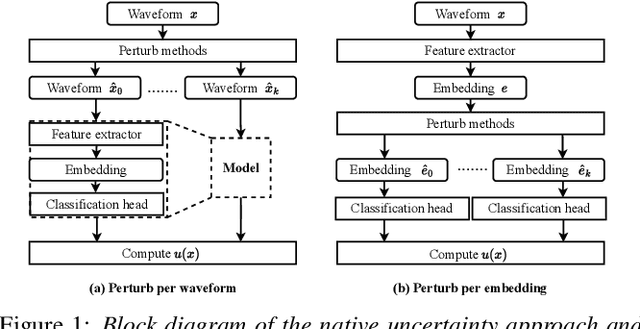
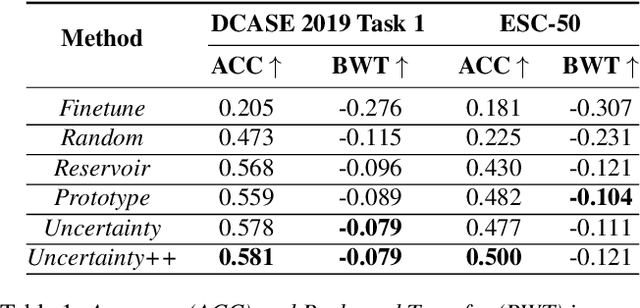
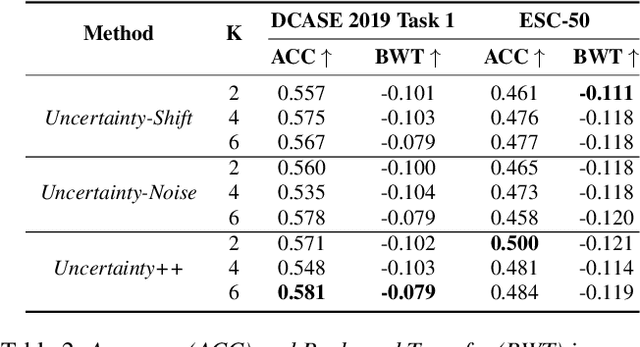
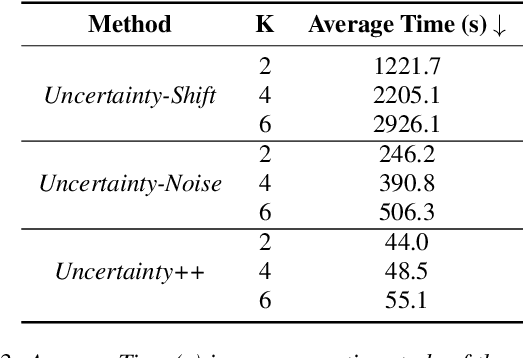
Abstract:Continuously learning new classes without catastrophic forgetting is a challenging problem for on-device environmental sound classification given the restrictions on computation resources (e.g., model size, running memory). To address this issue, we propose a simple and efficient continual learning method. Our method selects the historical data for the training by measuring the per-sample classification uncertainty. Specifically, we measure the uncertainty by observing how the classification probability of data fluctuates against the parallel perturbations added to the classifier embedding. In this way, the computation cost can be significantly reduced compared with adding perturbation to the raw data. Experimental results on the DCASE 2019 Task 1 and ESC-50 dataset show that our proposed method outperforms baseline continual learning methods on classification accuracy and computational efficiency, indicating our method can efficiently and incrementally learn new classes without the catastrophic forgetting problem for on-device environmental sound classification.
An investigation of pre-upsampling generative modelling and Generative Adversarial Networks in audio super resolution
Sep 30, 2021
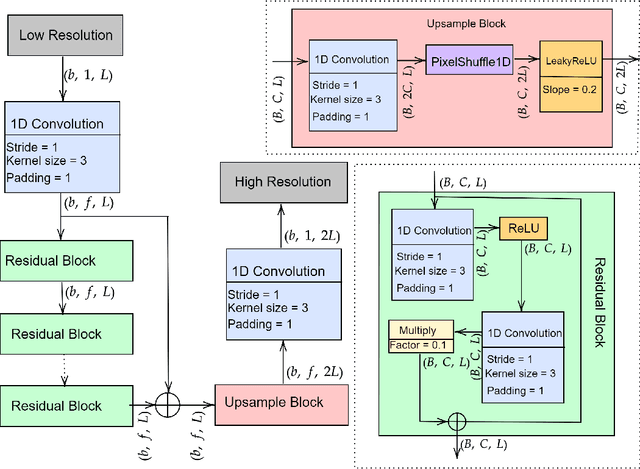
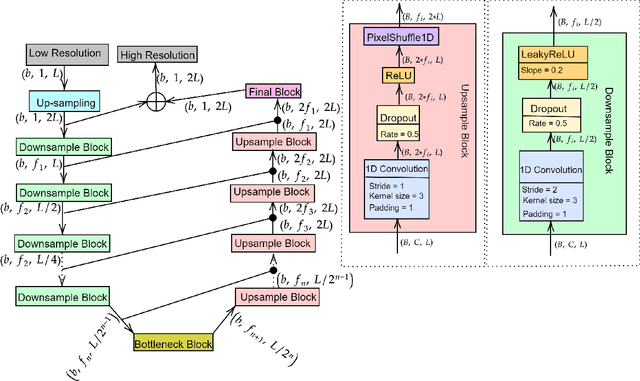

Abstract:There have been several successful deep learning models that perform audio super-resolution. Many of these approaches involve using preprocessed feature extraction which requires a lot of domain-specific signal processing knowledge to implement. Convolutional Neural Networks (CNNs) improved upon this framework by automatically learning filters. An example of a convolutional approach is AudioUNet, which takes inspiration from novel methods of upsampling images. Our paper compares the pre-upsampling AudioUNet to a new generative model that upsamples the signal before using deep learning to transform it into a more believable signal. Based on the EDSR network for image super-resolution, the newly proposed model outperforms UNet with a 20% increase in log spectral distance and a mean opinion score of 4.06 compared to 3.82 for the two times upsampling case. AudioEDSR also has 87% fewer parameters than AudioUNet. How incorporating AudioUNet into a Wasserstein GAN (with gradient penalty) (WGAN-GP) structure can affect training is also explored. Finally the effects artifacting has on the current state of the art is analysed and solutions to this problem are proposed. The methods used in this paper have broad applications to telephony, audio recognition and audio generation tasks.
Quantum-Assisted Genetic Algorithm
Jun 24, 2019

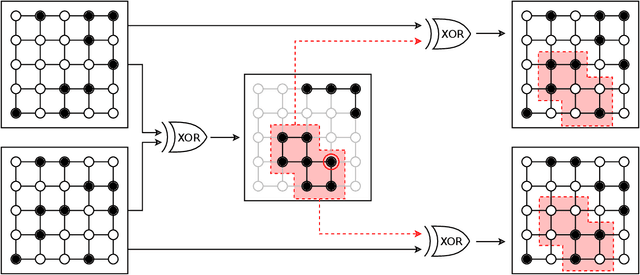
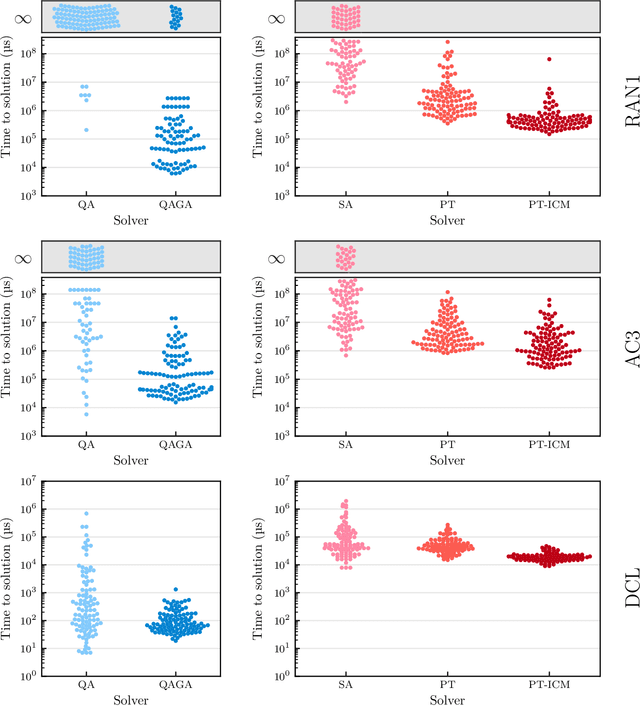
Abstract:Genetic algorithms, which mimic evolutionary processes to solve optimization problems, can be enhanced by using powerful semi-local search algorithms as mutation operators. Here, we introduce reverse quantum annealing, a class of quantum evolutions that can be used for performing families of quasi-local or quasi-nonlocal search starting from a classical state, as novel sources of mutations. Reverse annealing enables the development of genetic algorithms that use quantum fluctuation for mutations and classical mechanisms for the crossovers -- we refer to these as Quantum-Assisted Genetic Algorithms (QAGAs). We describe a QAGA and present experimental results using a D-Wave 2000Q quantum annealing processor. On a set of spin-glass inputs, standard (forward) quantum annealing finds good solutions very quickly but struggles to find global optima. In contrast, our QAGA proves effective at finding global optima for these inputs. This successful interplay of non-local classical and quantum fluctuations could provide a promising step toward practical applications of Noisy Intermediate-Scale Quantum (NISQ) devices for heuristic discrete optimization.
Accuracy of the Epic Sepsis Prediction Model in a Regional Health System
Feb 19, 2019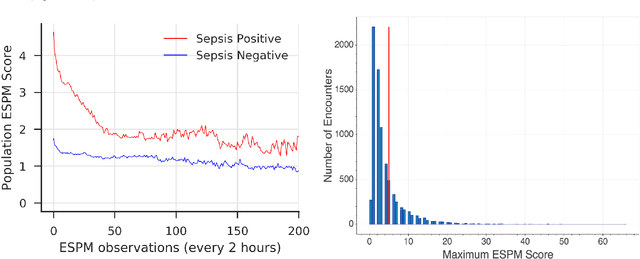
Abstract:Interest in an electronic health record-based computational model that can accurately predict a patient's risk of sepsis at a given point in time has grown rapidly in the last several years. Like other EHR vendors, the Epic Systems Corporation has developed a proprietary sepsis prediction model (ESPM). Epic developed the model using data from three health systems and penalized logistic regression. Demographic, comorbidity, vital sign, laboratory, medication, and procedural variables contribute to the model. The objective of this project was to compare the predictive performance of the ESPM with a regional health system's current Early Warning Score-based sepsis detection program.
 Add to Chrome
Add to Chrome Add to Firefox
Add to Firefox Add to Edge
Add to Edge